
Fundamentals
Within the intimate landscape of human anatomy, where the very narrative of our being is inscribed, there lies a structure both unassuming and profoundly significant ❉ the Hair Follicle. It is more than a mere pore upon the skin’s surface; it stands as a living organ, deeply anchored within the dermis, the generative wellspring from which each individual strand of hair emerges. This remarkable biological entity orchestrates the growth, sustenance, and eventual renewal of hair, a process unfolding ceaselessly throughout our lives. The Hair Follicle’s form, its delicate curvature, and the biological signals it processes collectively determine the character of the hair it produces, dictating whether a strand unfurls as straight, wavy, curly, or tightly coiled.
The intrinsic structure of the Hair Follicle shapes our hair’s very texture, a quality deeply woven into the fabric of identity and heritage across cultures. Consider the rich diversity of hair forms across humanity, from the sleek tresses of East Asia to the undulating waves of Europe, and to the vibrant, coily crowns so characteristic of African and diasporic communities. Each variation finds its genesis within the unique architectural blueprint of its corresponding follicle. It is a testament to the Earth’s varied climates and the enduring spirit of human adaptation.

The Follicle’s Cradle ❉ Basic Anatomy
To truly appreciate the Hair Follicle, one must first understand its foundational components, each playing a role in the intricate ballet of hair production. The follicle itself is a pocket-like invagination of the epidermis, extending down into the dermal layer of the skin. At its very base, nestled within a cup-shaped indentation, resides the Dermal Papilla.
This small but mighty structure is a cluster of specialized cells, rich in blood vessels, providing the essential nutrients and signaling molecules that fuel hair growth. It is the lifeblood of the follicle, nourishing the burgeoning hair from its earliest cellular stirrings.
Encasing the dermal papilla is the Hair Bulb, the expanded base of the Hair Follicle. Here, a flurry of cellular activity takes place. Within the hair bulb, highly proliferative cells known as Matrix Cells divide rapidly, pushing upwards to form the various layers of the hair shaft. Surrounding the hair bulb, like protective embrace, is the Outer Root Sheath and Inner Root Sheath.
These sheaths guide the growing hair shaft and provide structural support as it ascends towards the surface of the skin. The outer root sheath is an extension of the epidermis, while the inner root sheath is a more specialized, temporary structure that forms around the developing hair and eventually disintegrates before the hair exits the skin.
Attached to the Hair Follicle is the Sebaceous Gland, a tiny exocrine gland that secretes sebum, a natural oil. Sebum lubricates the hair and scalp, offering a protective layer and contributing to the hair’s sheen and pliability. The presence and activity of these glands can affect how different hair textures, particularly coily hair, receive and distribute moisture, influencing ancestral care practices that traditionally emphasize natural oils.
Also associated with the follicle is the Arrector Pili Muscle, a small smooth muscle that connects the follicle to the connective tissue of the dermis. When this muscle contracts, it causes the hair to stand on end, a phenomenon often referred to as “goosebumps.” While seemingly minor, this response reflects the follicle’s deep connection to the body’s broader physiological systems and its ancient role in thermoregulation and display.
The Hair Follicle, an intricate biological unit within the skin, serves as the generative core for each strand of hair, its unique shape dictating the hair’s curl pattern and contributing to the rich spectrum of human hair textures.
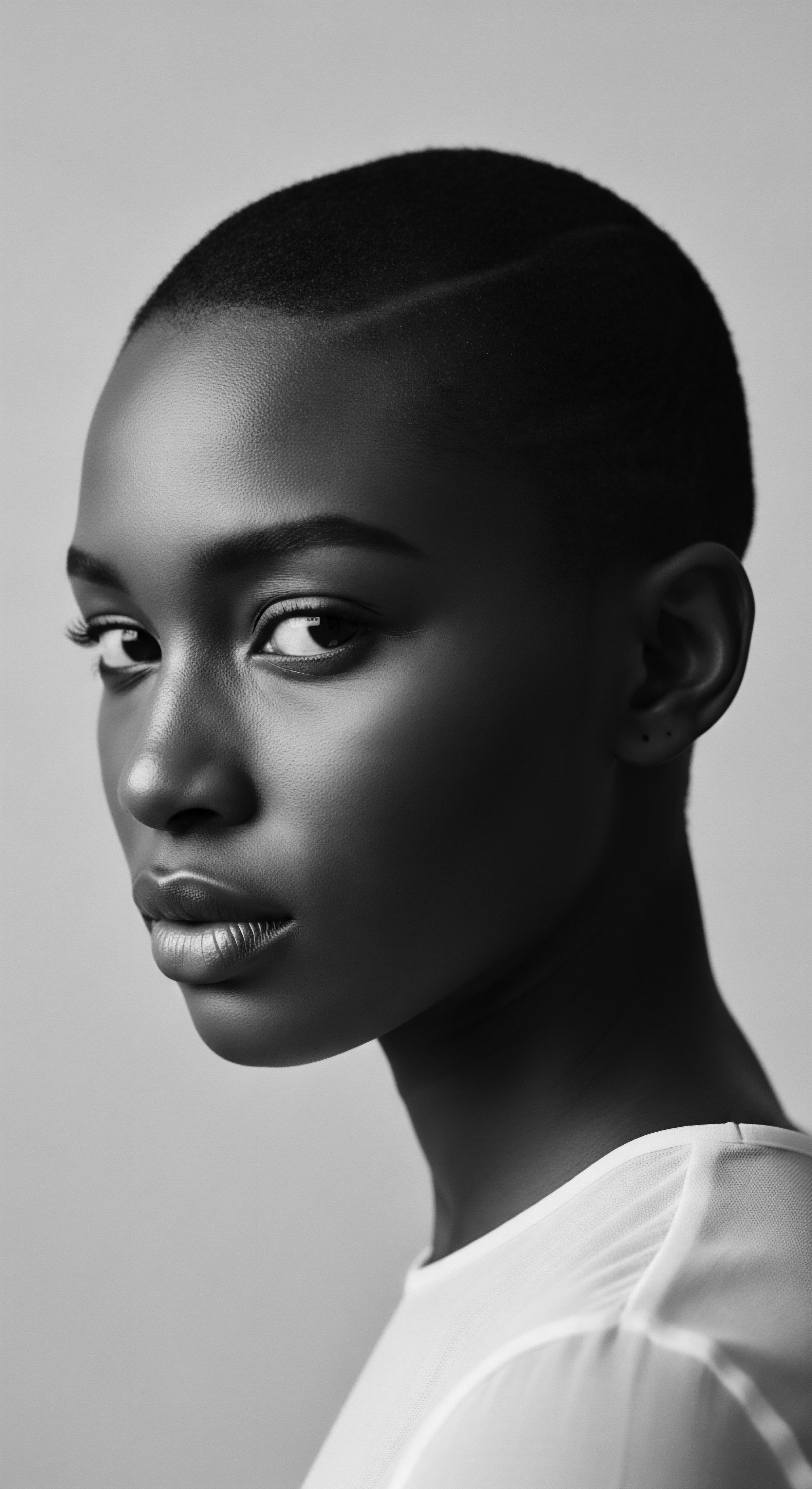
The Hair Shaft’s Genesis
The hair shaft itself, the visible portion of the hair, is composed primarily of a protein called Keratin. This same protein forms our nails and the outer layer of our skin, a testament to its protective and structural properties. The formation of keratinized cells within the hair bulb leads to the elongation of the hair shaft. As these cells move upwards, they flatten, lose their nucleus, and become densely packed with keratin, undergoing a process called keratinization.
The shaft emerges from the Hair Follicle as a dead, hardened structure, meaning it cannot repair itself once damaged. This inherent vulnerability underscores the ancestral emphasis on preventative care and gentle handling, particularly for more fragile textures.
The hair shaft is broadly composed of three distinct layers ❉
- Cuticle ❉ This outermost layer consists of overlapping, flattened cells, much like scales on a fish or shingles on a roof. It provides a protective barrier for the inner layers of the hair, safeguarding it from physical and environmental stressors. In textured hair, these cuticles may be more lifted, contributing to a greater propensity for moisture loss and breakage.
- Cortex ❉ Occupying the bulk of the hair shaft, the cortex comprises elongated, spindle-shaped cells packed with keratin fibers. It is this layer that determines the hair’s strength, elasticity, and color, as it contains melanin, the pigment responsible for hair hue. The arrangement of keratin fibers within the cortex plays a pivotal role in defining the hair’s curl pattern.
- Medulla ❉ The innermost core of the hair shaft, the medulla, is not always present in all hair types or even in all strands on an individual’s head. Its exact function remains a subject of ongoing scientific inquiry, but it may influence hair thickness and thermal insulation properties.

Early Whispers of Difference ❉ Follicle Shape
The fundamental explanation for the diverse array of hair textures across human populations lies in the shape of the Hair Follicle itself. A more circular or round follicle tends to produce straight hair. As the follicle becomes increasingly elliptical or oval in cross-section, the hair shaft it generates exhibits a corresponding curvature, leading to waves, curls, or coils. The degree of this ovality, or asymmetry, directly correlates with the tightness of the curl pattern.
The Hair Follicles of individuals with tightly coiled hair, characteristic of many Black and mixed-race communities, possess a markedly elliptical cross-section and display a distinct S-shaped or helical curvature beneath the skin’s surface. This unique follicular architecture compels the hair shaft to grow in a spiral formation, creating the characteristic spring-like coils. This inherent structural difference accounts for many of the unique properties of highly textured hair, including its volume, its tendency to shrink, and its distinctive resilience, which has often been celebrated in ancestral traditions. This anatomical particularity is not a flaw; it stands as a testament to the body’s ingenious adaptations to varying environmental pressures, a silent echo of ancient migrations and climatic dialogues.
From the simplest biological statement of the Hair Follicle, one begins to glimpse the deep connection it holds to human identity, cultural expression, and the enduring legacies that shape our very strands. This elemental understanding paves the way for a more profound appreciation of hair as a living archive of heritage.
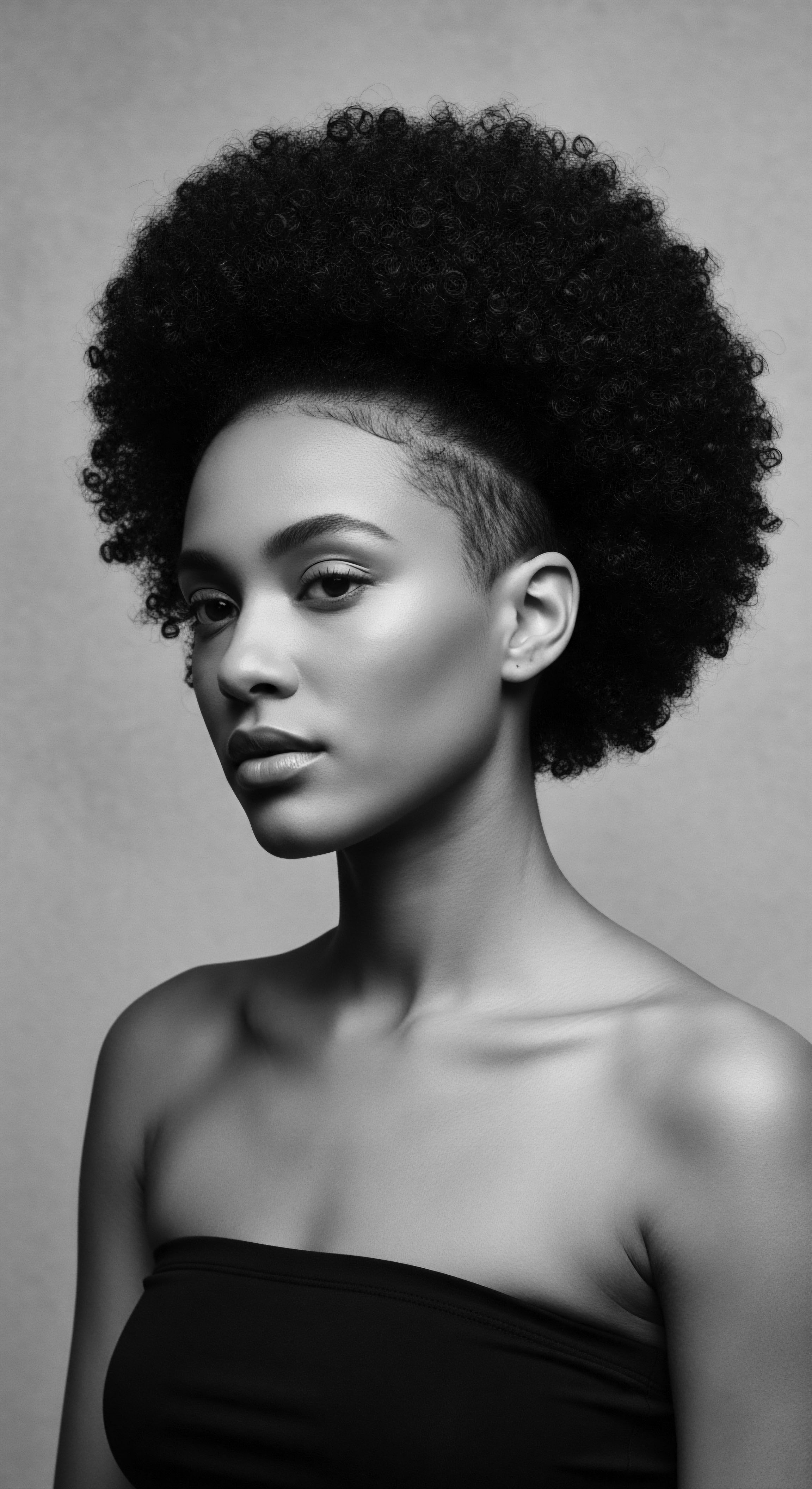
Intermediate
Beyond the foundational explanation of its structure, the Hair Follicle reveals itself as a dynamic biological marvel, continuously engaged in a rhythmic process of growth and renewal. This intrinsic cycle of the follicle, coupled with the subtle yet significant genetic blueprints it carries, begins to sketch a more complete picture of how our hair acquires its particular character. To understand the nuanced needs of textured hair, especially within Black and mixed-race experiences, a deeper awareness of these intermediate biological truths is required, as they often intersect with ancestral care practices and cultural interpretations of hair.

The Rhythmic Dance of Growth ❉ Cycles of Renewal
Each Hair Follicle operates according to a precise, cyclical rhythm, ensuring a continuous supply of hair throughout our lives. This cycle, a testament to the body’s remarkable capacity for self-renewal, unfolds in distinct phases ❉
- Anagen (Growth Phase) ❉ This is the active period of hair production, where matrix cells within the hair bulb rapidly divide, pushing the hair shaft upwards and outwards. The duration of the anagen phase largely determines the maximum length a hair can achieve. For scalp hair, this phase typically lasts for 3 to 7 years. Individuals with longer hair inherently possess follicles capable of maintaining a prolonged anagen phase. This period is a time of robust cellular activity, with the dermal papilla actively supplying nutrients to the burgeoning hair shaft.
- Catagen (Transition Phase) ❉ A brief and transitional period, the catagen phase marks the cessation of active growth. Lasting approximately 15 to 20 days, the Hair Follicle begins to shrink, and the lower part of the follicle regresses. The hair shaft, now fully formed, detaches from the dermal papilla, signifying the end of its productive life. It is a moment of pause, preparing the follicle for its next stage.
- Telogen (Resting Phase) ❉ Following catagen, the follicle enters a resting period. The club hair, now detached from the dermal papilla, remains anchored within the follicle, awaiting its eventual release. This phase typically spans 2 to 3 months. At the culmination of telogen, a new anagen hair begins to grow from the same follicle, gradually pushing out the old, resting hair. This natural shedding is a sign of healthy hair renewal.
This continuous cycle ensures a constant turnover of hair, with roughly 90% of scalp follicles in the anagen phase at any given moment. Variations in these cycle durations, influenced by genetics and environment, directly impact hair density and perceived thickness.
The Hair Follicle’s cyclical growth, encompassing active, transitional, and resting phases, underscores the continuous renewal of hair, a rhythm deeply connected to both biological programming and historically informed care routines.
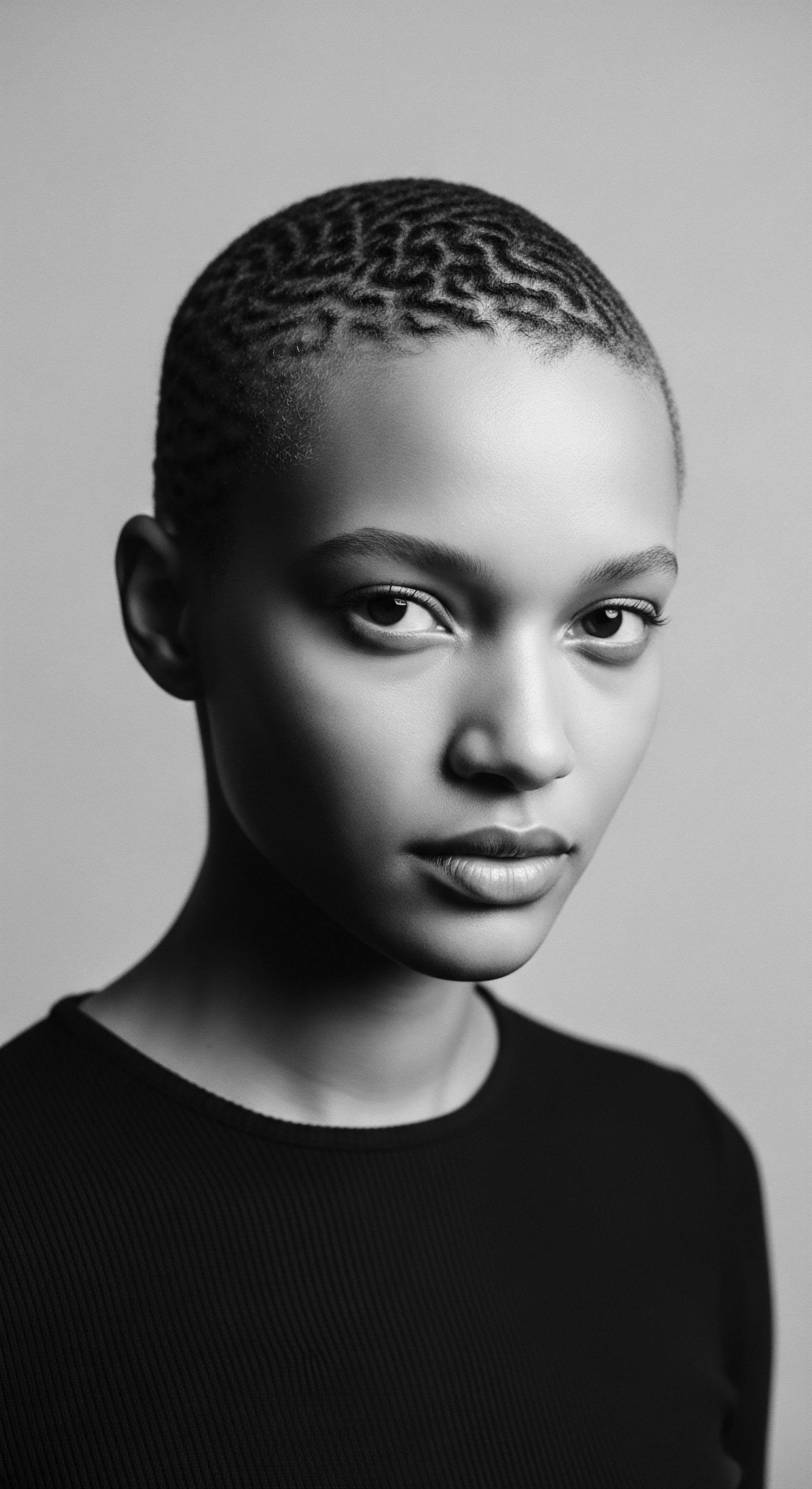
Genetic Cartography of the Strand ❉ Unpacking Inherited Shapes
The intricate diversity of human hair texture finds its roots deeply embedded within our genetic code. While environmental factors can influence hair’s temporary appearance, the fundamental blueprint for a hair follicle’s shape and thus the hair’s curl pattern is inherited. Scientists recognize that multiple genes contribute to this inherited trait, with different genes playing varying roles across diverse populations.
For individuals of African descent, the prevalence of tightly coiled hair stems from centuries of genetic adaptation and selection. The unique, flattened elliptical shape of these Hair Follicles, and the subsequent S-shaped growth of the hair shaft, is a distinguishing feature. While specific genes exclusively dictating Afro-textured hair are still being fully charted, research points to the influence of several genetic markers. For example, some studies suggest that variations in genes such as KRT74, TCHH, and CUTC are significant contributors to curl patterns in African populations.
The precise interplay of these genetic elements guides the cellular architecture of the follicle, leading to the distinctive curl. This genetic predisposition, deeply tied to the earliest human origins on the African continent, represents an ancestral legacy, influencing how Black and mixed-race communities have historically understood and cared for their hair.
The understanding of hair texture as a genetic inheritance also carries profound cultural weight. For many Black communities, hair texture has been a visible marker of identity, belonging, and sometimes, a site of colonial oppression and imposed beauty standards. The biological basis of coily hair stands as a testament to the resilience of ancestral traits, even in the face of societal pressures that often devalued natural hair forms.
| Hair Texture Straight (Leiotrichy) |
| Follicle Cross-Sectional Shape Generally round or circular |
| Hair Shaft Growth Pattern Grows straight out of the scalp |
| Hair Texture Wavy (Cymotrichy) |
| Follicle Cross-Sectional Shape Slightly oval or elliptical |
| Hair Shaft Growth Pattern Exhibits gentle S-shapes or undulations |
| Hair Texture Coily/Kinky (Ulotrichy) |
| Follicle Cross-Sectional Shape Significantly flattened elliptical, ribbon-like |
| Hair Shaft Growth Pattern Grows in tight spirals, often S-shaped below skin surface |
| Hair Texture These distinctions reflect the fundamental biological origins of hair diversity, often shaping cultural perceptions and traditional care approaches. |

Beyond Biology ❉ The Follicle as a Cultural Marker
The Hair Follicle, though microscopic, has played a disproportionately monumental role in human cultural narratives, particularly for Black and mixed-race individuals. Its product, the hair strand, has served as a canvas for identity, a symbol of resistance, and a vessel for ancestral memory. In pre-colonial African societies, hairstyles, often dictated by the natural texture created by the Hair Follicle, conveyed complex social messages.
Hair could signify tribal affiliation, marital status, age, wealth, and even spiritual connection. The meticulous care given to hair, often a communal activity, reflected not just aesthetic preference but also the value placed on cleanliness, health, and social cohesion.
With the transatlantic slave trade and subsequent colonial influences, the meaning and perception of the Hair Follicle’s output underwent a brutal transformation. Enslaved Africans were often stripped of their traditional hair care tools and practices, their hair forcibly cut as a means of dehumanization and cultural erasure. This deliberate act sought to sever the profound link between hair and identity. Over generations, societal pressures imposed by Eurocentric beauty standards led many Black individuals to chemically alter their hair texture, pursuing straighter forms for perceived social acceptance and economic opportunities.
The very language used to describe hair became weaponized, with phrases such as “good hair” referring to straighter or looser textures, implicitly devaluing coily hair. This historical trauma, however, did not erase the ancestral connection to natural hair. Instead, it ignited a powerful movement of reclamation.
The civil rights and Black Power movements of the 1960s and 70s saw a resurgence of natural hairstyles, like the Afro, which became potent symbols of Black pride, self-acceptance, and a powerful assertion of identity against oppressive norms. This shift represented a conscious return to honoring the natural output of the Hair Follicle, re-establishing its dignity.
The Hair Follicle, therefore, stands as a quiet yet powerful testament to the enduring spirit of ancestry. Its biological functions lay the groundwork for our physical appearance, but its cultural reverberations echo through centuries of human experience, reminding us that understanding hair reaches far beyond the purely scientific; it is an exploration of identity, resilience, and the deeply personal heritage woven into every strand.
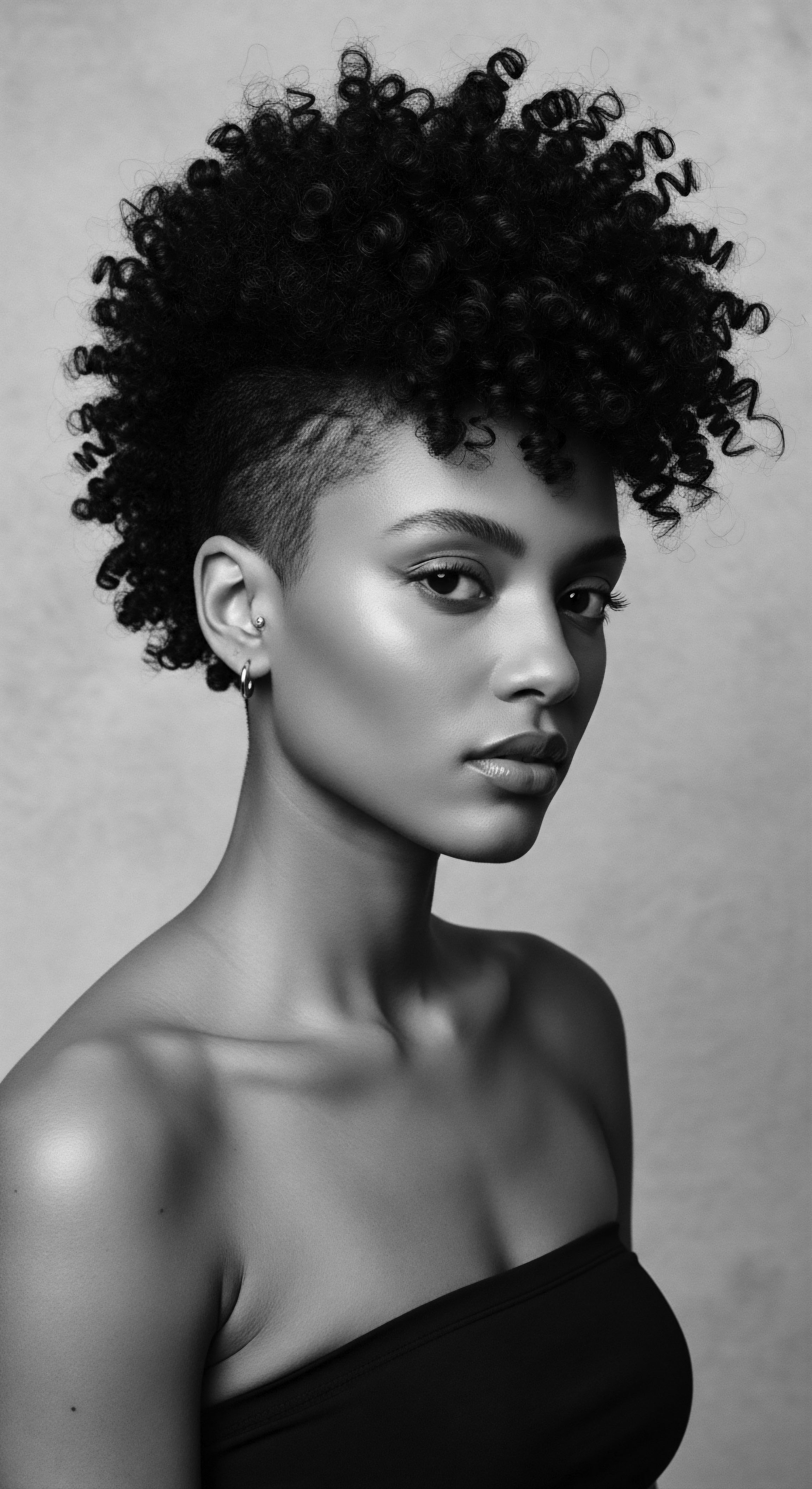
Academic
The Hair Follicle, from an academic vantage point, represents a sophisticated mini-organ, a highly organized structure capable of cyclic regeneration and producing a diverse array of hair fibers. Its academic definition extends beyond basic anatomical description to encompass its complex cellular biology, intricate signaling pathways, and profound evolutionary significance, particularly in the context of human phenotypic diversity. The meaning of the Hair Follicle, when examined through this rigorous lens, clarifies its role as an adaptive structure, yet it also illuminates the ways in which its biological variations have been culturally interpreted and, at times, regrettably misused to construct social hierarchies. This deeper exploration necessarily intertwines genetic science with historical and anthropological inquiry, especially when considering textured hair heritage.
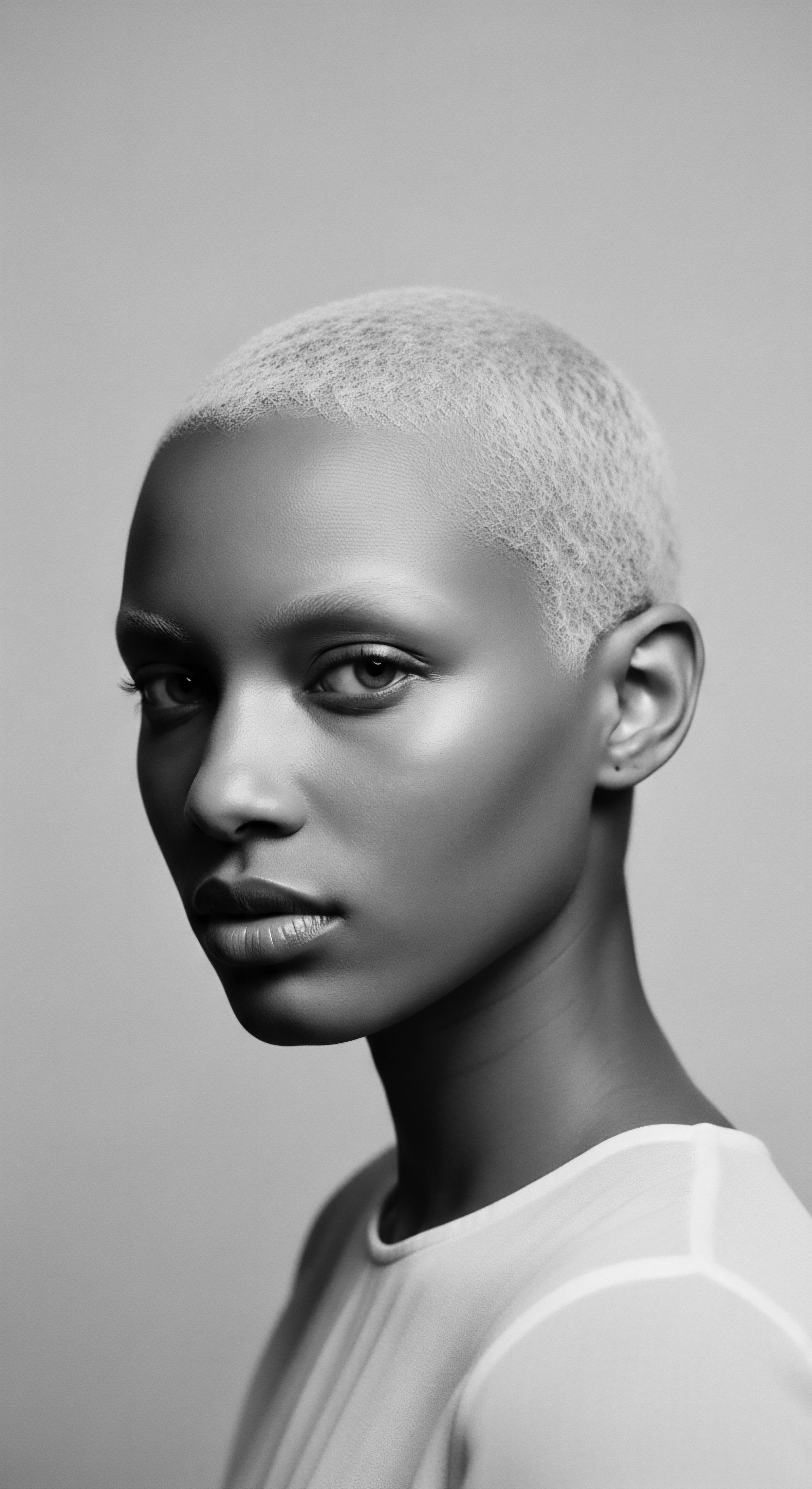
The Architect of Identity ❉ A Deeper Scientific View
At its core, the Hair Follicle functions as a highly regenerative epithelial-mesenchymal interaction system, meaning it involves continuous communication between epithelial cells (which form the structural parts of the follicle) and mesenchymal cells (which form the dermal papilla). This cellular dialogue is meticulously regulated by a complex network of signaling molecules, growth factors, and transcription factors. The architecture of the Hair Follicle is not static; rather, it is a dynamic system capable of undergoing complete cycles of regression (catagen), rest (telogen), and renewed growth (anagen). The anagen phase, in particular, is characterized by intense proliferative activity within the hair matrix, where keratinocytes and melanocytes collaboratively produce the hair shaft and its pigment.
The precise morphology of the Hair Follicle, particularly its curvature, is a primary determinant of hair fiber shape. In straight hair, the follicle and its opening are generally circular. For wavy hair, the follicle exhibits a slight ovality, creating a gentle bend in the growing strand. The most striking distinction, however, is observed in the follicles producing highly coiled hair, common in African and diasporic populations.
These follicles are markedly asymmetrical, taking on a flattened, elliptical, or even ribbon-like cross-section. Furthermore, the follicle itself may show a significant S-shaped or helical curve within the dermis, coercing the hair shaft to adopt a corresponding tightly coiled, spring-like structure as it emerges. This inherent asymmetry, coupled with an uneven distribution of keratin within the hair shaft, contributes to the propensity for coily hair to form knots and tangles, a characteristic that requires specific care strategies often passed down through generations.
Moreover, the sebaceous glands associated with African hair follicles tend to produce sebum that struggles to travel down the highly curved hair shaft, potentially leading to increased dryness and susceptibility to breakage. This physiological reality explains the historical and continued emphasis on moisturizing practices, utilizing natural oils and butters, within ancestral hair care traditions to maintain hair health and pliability. This scientific understanding validates the wisdom embedded in long-standing cultural rituals of hair nourishment.

Genetic Legacies ❉ Tracing Ancestral Hair Patterns
The genetic underpinnings of hair texture are a fascinating area of dermatological and anthropological inquiry. Human hair texture is a polygenic trait, meaning it is influenced by multiple genes acting in concert. While the precise genetic mechanisms are still being elucidated for all hair types, particularly for the full spectrum of Afro-textured hair variations, significant progress has been made in identifying some key genetic players. Studies indicate that different genes contribute to hair texture and thickness across various human populations.
For instance, research has identified variations in the EDAR gene (Ectodysplasin A Receptor) as a strong determinant of hair thickness and straightness, particularly prevalent in East Asian and Native American populations. A specific variant, EDAR370A, is associated with thicker, straighter hair and is nearly absent in individuals of European and African descent. This gene, involved in the development of hair follicles, teeth, and sweat glands, demonstrates how subtle genetic shifts can result in distinct phenotypic expressions. While EDAR plays a less direct role in the tight coiling of African hair, its inverse prevalence highlights the evolutionary adaptations that have shaped hair diversity across the globe, responding to environmental pressures such as solar radiation and humidity.
Genetic predispositions, including variations in genes like EDAR, fundamentally shape hair follicle morphology, thereby influencing the diverse hair textures observed globally, a biological reality with significant cultural implications for communities with textured hair.
For individuals of African descent, researchers have linked mutations in genes such as P2RY5 to hereditary “woolly hair,” a characteristic that often manifests as coarse, dry, tightly curled, and sparse hair. While this particular gene is associated with a specific syndrome, it offers clues into the broader genetic architecture influencing curl patterns. Other genes like KRT74, TCHH, and CUTC have also been implicated in contributing to the distinctive curl patterns observed in African populations. This ongoing genetic research provides a scientific basis for the inherited qualities of textured hair, validating long-held observations within communities about the familial resemblances of hair types.
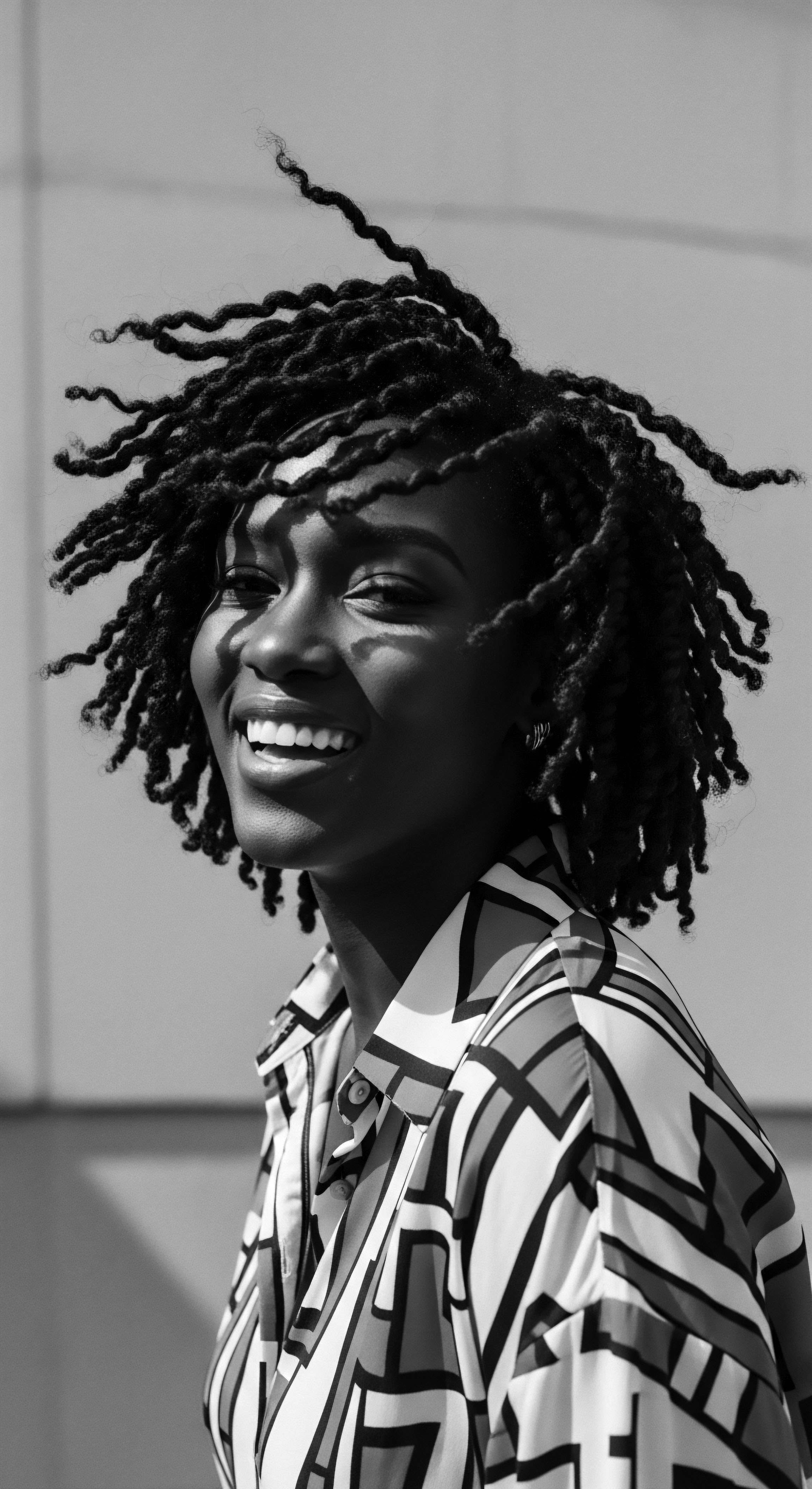
The EDAR Gene ❉ A Case Study in Human Adaptation and Its Echoes
The study of the EDAR gene offers a compelling illustration of how biological evolution intersects with human migration and environmental adaptation, inadvertently setting the stage for subsequent cultural interpretations of hair. The EDAR370A Variant, a single nucleotide polymorphism, has been identified as having undergone strong positive selection, particularly in East Asian and Native American populations. This genetic change, estimated to have arisen approximately 30,000 years ago and reached high frequencies in East Asian populations by about 10,700 years ago, is associated with the production of thicker hair strands and increased density, resulting in straighter, coarser hair compared to hair of European or African origin. The functional implication is that this variant leads to enhanced signaling activity from the Ectodysplasin A Receptor, promoting larger hair follicles and a more cylindrical fiber cross-section.
For communities of African descent, the EDAR370A variant is notably absent or present at very low frequencies. This observation highlights that the unique characteristics of Afro-textured hair—its distinctive tight coils, elliptical follicle shape, and often lighter density (number of strands, not necessarily thickness of individual strands)—are governed by different genetic pathways, or a different combination of ancestral alleles. From an evolutionary perspective, tightly coiled hair is believed to have been an adaptation in early human ancestors to protect the scalp from intense ultraviolet radiation and to aid in thermoregulation in hot climates by trapping a layer of air close to the scalp, thus reducing heat transfer to the head. The Hair Follicle, in this deep historical context, represents not merely a biological structure, but a living archive of human survival and environmental ingenuity.
The scientific understanding of these genetic differences gains profound cultural resonance when viewed through the lens of history. The very characteristics that arose as evolutionary advantages for specific populations became, through the distorting mirror of colonialism and slavery, arbitrary markers of inferiority. The preference for straight hair, often associated with the EDAR-influenced phenotypes more common in certain Asian and European populations, became deeply embedded in beauty standards, contributing to systemic discrimination against natural Afro-textured hair. The Hair Follicle, in this tragic historical narrative, moved from being a biological adaptation to a site of social contestation, its natural forms devalued by oppressive ideologies.
The genetic variations influencing hair follicle development, such as the EDAR gene’s role in East Asian hair thickness, underscore deep evolutionary adaptations, yet these biological differences were regrettably twisted by colonial ideologies to perpetuate discriminatory beauty standards against textured hair.

The Follicle in the Crucible of History ❉ Resistance and Resilience
The history of Black hair care is inextricably linked to the Hair Follicle’s inherent structure and the societal pressures that sought to modify its natural output. During slavery, the deliberate cutting of African hair served as a brutal act of disempowerment, an attempt to erase ancestral identity. Yet, even in the face of such devastation, the knowledge of traditional hair care practices, often involving natural butters, herbs, and oils, persisted through oral tradition and adaptation. These practices, focused on moisture retention and scalp health, intuitively addressed the physiological needs of coily hair, which, due to its follicular shape, struggles with sebum distribution and moisture retention.
The mid-20th century saw the widespread adoption of chemical relaxers, a method of permanently altering the hair shaft by breaking its disulfide bonds, rendering highly textured hair straight. This practice, while offering a semblance of conformity to Eurocentric beauty ideals and sometimes granting access to economic opportunities, often came at a significant cost to scalp health and hair integrity. A 2023 survey indicated that 61% of Black respondents reported using chemical straighteners because they “felt more beautiful with straight hair,” even as these products contain harmful chemicals linked to health risks. This stark statistic reveals the profound impact of imposed beauty standards on the intimate choice of hair care, directly influencing the Hair Follicle and its long-term health.
The contemporary natural hair movement represents a profound cultural shift, a conscious return to honoring the Hair Follicle’s natural design. This movement encourages Black women to abandon chemical straighteners and embrace their kinks, curls, and coils unapologetically. It stands as a powerful act of self-definition and a reclamation of ancestral heritage, recognizing the inherent beauty and strength of all hair textures.
The increase in Black women preferring their natural hair texture, a 23% rise between 2017 and 2020, signals a potent cultural resurgence and a renewed appreciation for the Hair Follicle’s authentic expression. This demonstrates a growing alignment between personal identity and the natural biology of the Hair Follicle.
- Pre-Colonial African Hair Care ❉ Hair care rituals were communal, reflecting social status, age, and tribal identity; they often employed natural ingredients like shea butter and aloe vera, nourishing the hair from the follicle outwards.
- Slavery and Dehumanization ❉ Hair was forcibly cut to erase identity and cultural connections; limited access to traditional tools and products necessitated adaptation and resilience in care practices.
- Post-Emancipation and Conformity ❉ The rise of hot combs and chemical relaxers sought to align hair with Eurocentric beauty standards, impacting hair health and sometimes creating a caste system based on texture.
- Civil Rights and Black Power Eras ❉ A powerful reclamation of natural hair, with styles like the Afro symbolizing pride, resistance, and self-acceptance, directly challenging prevailing norms.
- Contemporary Natural Hair Movement ❉ A resurgence of valuing natural textures, prioritizing scalp health and holistic care, and affirming diverse hair forms as central to Black identity and heritage.

Holistic Follicle Care ❉ Bridging Ancestral Wisdom and Modern Science
The deep wisdom of ancestral hair care practices, often dismissed by colonial narratives, finds compelling validation in modern scientific understanding of the Hair Follicle. Traditional methods, such as the consistent application of natural oils and butters, and the practice of protective styling like braiding and twisting, intuitively addressed the unique physiological needs of textured hair. For instance, the tight curl pattern of Afro-textured hair means that natural sebum produced by the sebaceous glands struggles to travel down the hair shaft, leading to dryness and susceptibility to breakage. Ancestral practices of “greasing” the hair and scalp, using ingredients like shea butter and coconut oil, directly counteracted this challenge by providing external moisture and lubrication, promoting scalp health and strand flexibility.
Scientific research today affirms the importance of these very principles. While some modern practices, like excessively tight braiding or the prolonged use of certain weaves, can indeed cause traction alopecia—a form of hair loss due to chronic tension on the Hair Follicle—this does not negate the foundational protective principles of traditional styling. Instead, it highlights the need for informed application, ensuring that protective styles are truly protective, allowing the follicle to rest and thrive. The insights from studies on the Hair Follicle’s mechanics, the chemical composition of hair, and the impact of external stressors now allow for a more precise, scientifically informed approach to ancestral care.
The focus on scalp health in ancestral practices, often through scalp massages and herbal infusions, also aligns with contemporary understanding of follicular well-being. A healthy scalp environment is paramount for optimal Hair Follicle function, as inflammation or irritation can disrupt the growth cycle and lead to various hair disorders. Modern dermatology, while offering advanced treatments, increasingly recognizes the enduring efficacy of practices that prioritize gentle cleansing, consistent moisture, and minimizing mechanical stress—principles deeply embedded in the traditional hair care repertoires of Black and mixed-race communities. This convergence of ancient wisdom and current scientific insight strengthens the understanding of the Hair Follicle, celebrating its biological resilience and its profound connection to cultural continuity.

Reflection on the Heritage of Hair Follicles
As we contemplate the Hair Follicle, from its microscopic architecture to its vast cultural resonance, we recognize it as far more than a biological component. It stands as a profound symbol, a living connection to the enduring narrative of textured hair, its heritage, and its journey through time. The very coil and bend of a hair strand, born from the unique shape of its follicle, speaks volumes about ancestral adaptation, resilience in the face of adversity, and the unwavering spirit of self-expression.
The collective experience of Black and mixed-race communities offers a particularly vivid lens through which to behold the Hair Follicle’s significance. It has been a silent witness to eras of forced conformity, a canvas for both imposed shame and vibrant celebration. The historical pressures to alter natural textures underscore the power inherent in acknowledging and embracing the Hair Follicle’s authentic expression. Each natural curl, wave, or coil, then, becomes a deliberate act of honoring lineage, a visible affirmation of a history that refused to be erased.
The dialogue between ancestral wisdom and modern scientific understanding of the Hair Follicle is not a binary choice, but rather a harmonious convergence. Ancient practices of nourishing with natural ingredients, of protective styling, and of communal hair rituals find affirmation in contemporary biological insights. This synergy empowers us to approach hair care not as a pursuit of fleeting trends, but as a deeply rooted practice of self-care, cultural continuity, and ancestral reverence.
The Hair Follicle represents a living chronicle of ancestral wisdom and adaptation, continually shaping identity through its innate biological design and evolving cultural meaning.
In the end, the Hair Follicle, in its elemental form, speaks of the inherent beauty and diversity of human creation. Its story, particularly within the context of textured hair, is a testament to the power of identity, the strength of heritage, and the boundless capacity for communities to reclaim their narratives, one tender strand at a time. The Soul of a Strand, truly, begins with the Hair Follicle, an unending source of wonder and connection to our deepest roots.

References
- Byrd, Ayana D. and Lori L. Tharps. Hair Story ❉ Untangling the Roots of Black Hair in America. St. Martin’s Griffin, 2001.
- Dabiri, Emma. Twisted ❉ The Tangled History of Black Hair Culture. Harper Perennial, 2020.
- Davis-Sivasothy, Audrey. The Science of Black Hair ❉ A Comprehensive Guide to Textured Hair Care. SistasCurls, 2011.
- Ellington, Tameka. Textures ❉ The History and Art of Black Hair. Schiffer, 2017.
- Rosado, Tanya. The Grammar of Hair ❉ Identity, Representation, and Performance in African American Women’s Hair Practices. PhD diss. University of Texas at Austin, 2003.
- Millner, Monica. Natural & Free ❉ Journey to Natural Beauty. 2013.
- Christiano, Angela M. et al. “A new gene involved in determining hair texture in humans.” Nature Genetics, 2008.
- Rosado, Tanya. Hair Care Practices from the Diaspora ❉ A Look at Africa, America, and Europe. National Museum of African American History and Culture, 2025.
- Kamberov, Yana G. et al. “Modeling recent human evolution in mice by expression of a selected EDAR variant.” Cell, 2013.
- Hagner, Michael. “Hair atlases ❉ The world population divided up on the basis of hair texture and colour.” 2008.
- Auster, Gara. My Powerful Hair. Abrams Books for Young Readers, 2024.
